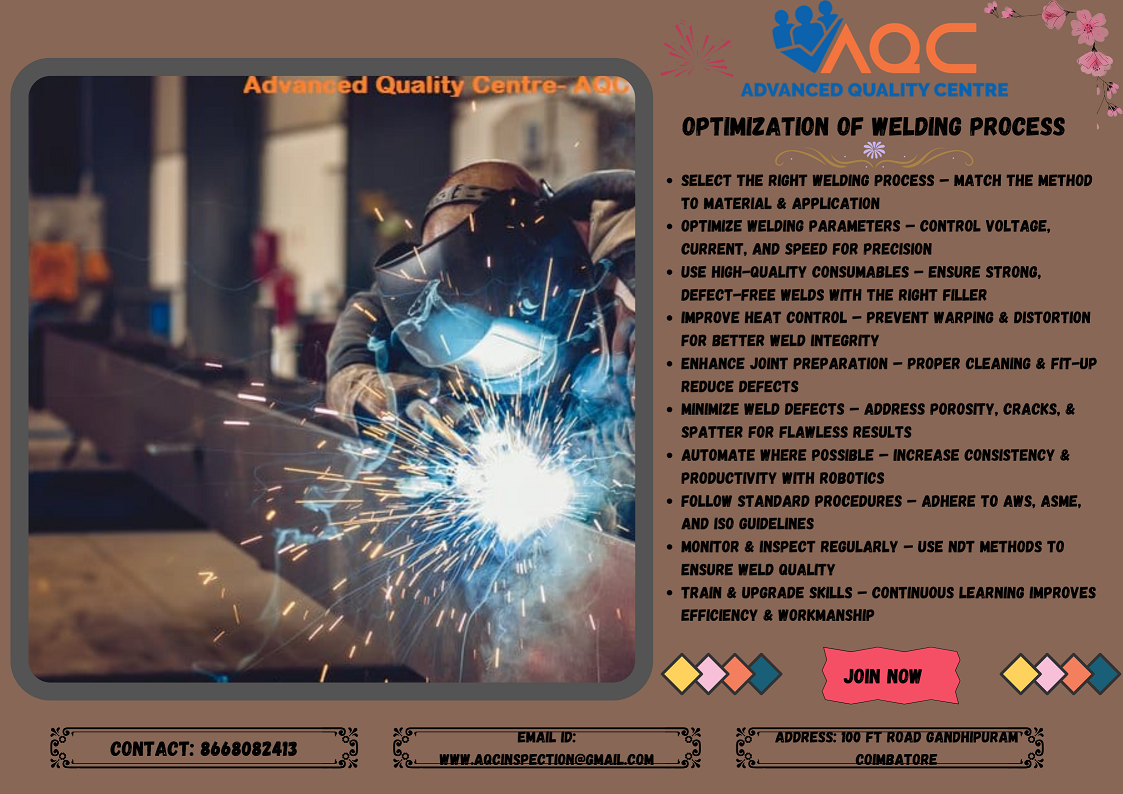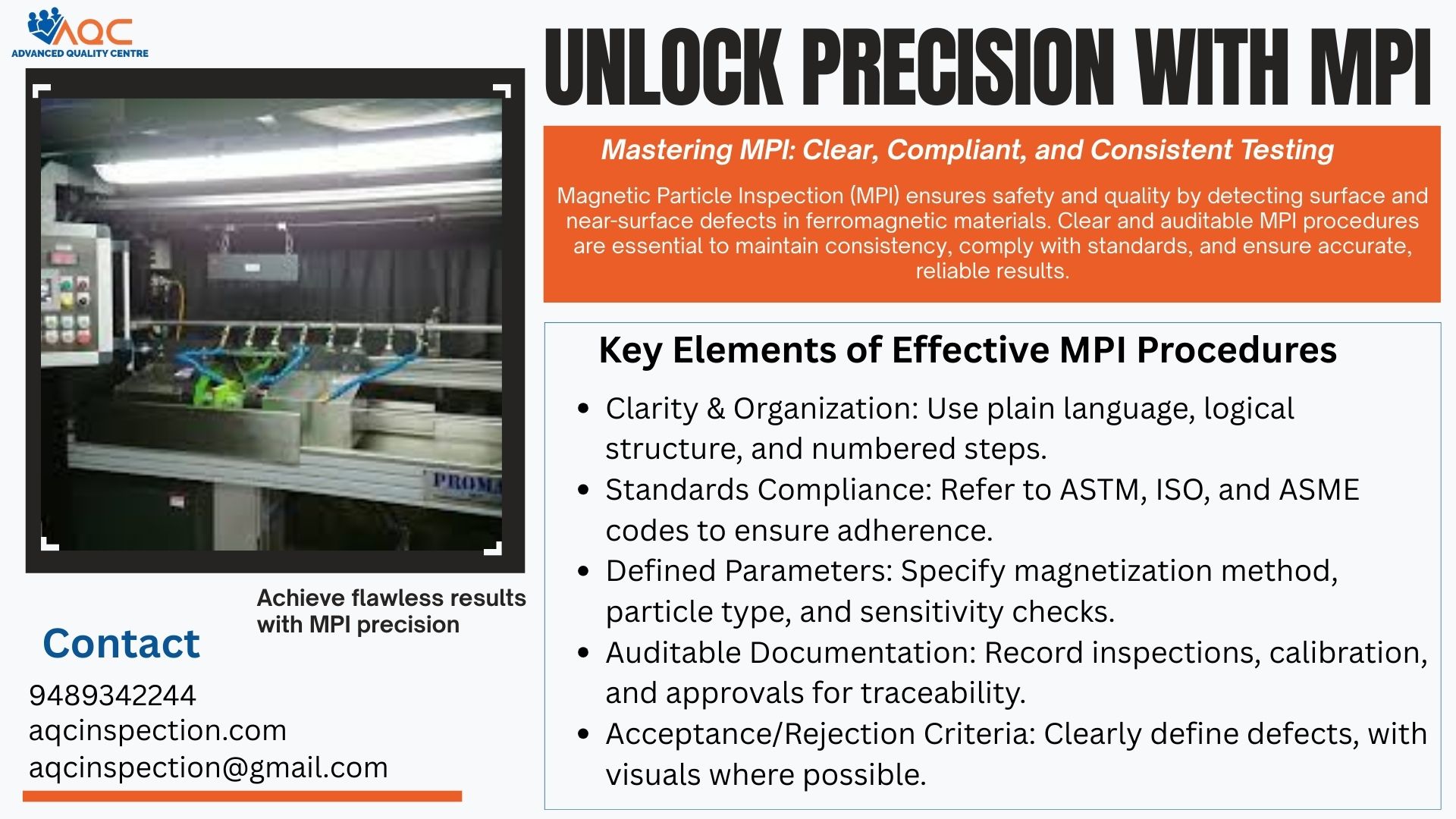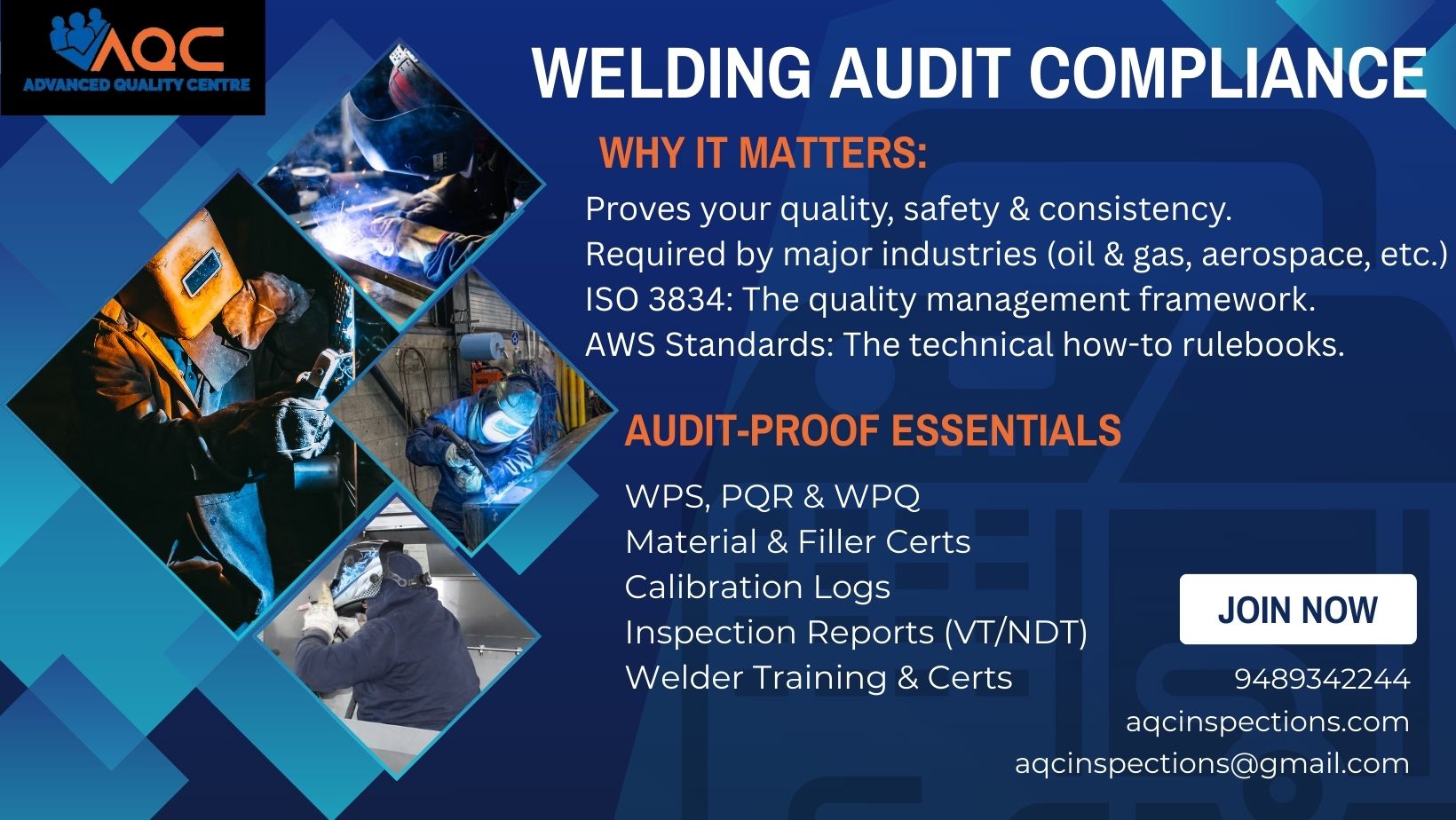OPTIMIZATION OF THE WELDING PROCESS ENHANCING EFFICIENCY AND QUALITY
Introduction
In modern industries, welding plays a crucial role in manufacturing, construction, and fabrication. However, without proper welding process optimization, businesses may face challenges like defects, inefficiencies, and increased costs. At AQC – Advanced Quality Centre, we specialize in improving welding techniques to achieve higher efficiency, cost reduction, and superior weld quality.
Key Factors for Welding Process Optimization
To maximize productivity and ensure defect-free welds, the following aspects should be considered:
-
Selection of the Right Welding Process
Choosing the correct welding method is essential for improved performance. The most commonly used techniques include:
- MIG Welding (GMAW): Best for speed and automated processes.
- TIG Welding (GTAW): Provides precision and high-quality welds.
- Stick Welding (SMAW): Suitable for outdoor and field applications.
- Flux-Cored Arc Welding (FCAW): Ideal for heavy fabrication.
- Submerged Arc Welding (SAW): Preferred for thick material welding.
- Laser & Plasma Welding: Advanced welding techniques for precision applications.
-
Optimization of Welding Parameters
Proper adjustment of welding parameters significantly impacts weld strength, appearance, and penetration depth. Key parameters include:
- Voltage & Current: Ensure correct heat input for proper fusion.
- Welding Speed: Adjust travel speed to prevent burn-through or cold laps.
- Electrode & Wire Selection: Choose the right filler metal for material compatibility.
- Shielding Gas Composition: Optimize gas mixtures for better arc stability and reduced porosity.
-
Heat Control and Distortion Management
Excessive heat can lead to warping, residual stress, and cracking. Effective techniques to minimize heat effects include:
- Preheating: Reduces thermal shock and enhances penetration.
- Interpass Temperature Control: Prevents excessive heating between passes.
- Welding Sequence & Fixturing: Ensures even heat distribution and reduces distortion.
-
Reducing Welding Defects
Common welding defects such as porosity, undercut, cracks, and lack of fusion can be minimized by:
- Ensuring proper cleaning and preparation of materials before welding.
- Using the correct electrode angle and travel speed.
- Checking gas flow rates and shielding techniques for contamination prevention.
- Conducting Non-Destructive Testing (NDT) for defect detection and quality assurance.
-
Automation & Robotics in Welding
Automated welding solutions can improve consistency, reduce human error, and increase productivity. Benefits include:
- Robotic MIG & TIG welding for high-speed manufacturing.
- CNC-controlled plasma and laser welding for precision applications.
- Welding sensors & AI-based monitoring for real-time defect detection.
-
Cost Optimization & Productivity Improvement
To ensure cost-effective welding, focus on:
- Reducing consumable waste by using optimized wire feeding systems.
- Minimizing rework and repairs by maintaining strict quality control.
- Implementing training programs for welders to enhance skill levels.
- Using energy-efficient welding machines to reduce operational costs.
Conclusion
Optimizing the welding process is key to achieving high-quality welds, reducing costs, and improving production efficiency. At AQC – Advanced Quality Centre, we offer welding process optimization services, training programs, and high-performance consumables to help industries enhance their welding operations. Contact us today to improve your welding efficiency!




